Is a 3-Year-Old Safe in a Booster Seat?

![]()
![]()
![]()
![]()
![]()
Why 3-year-olds Have No Business Riding in Booster Seats
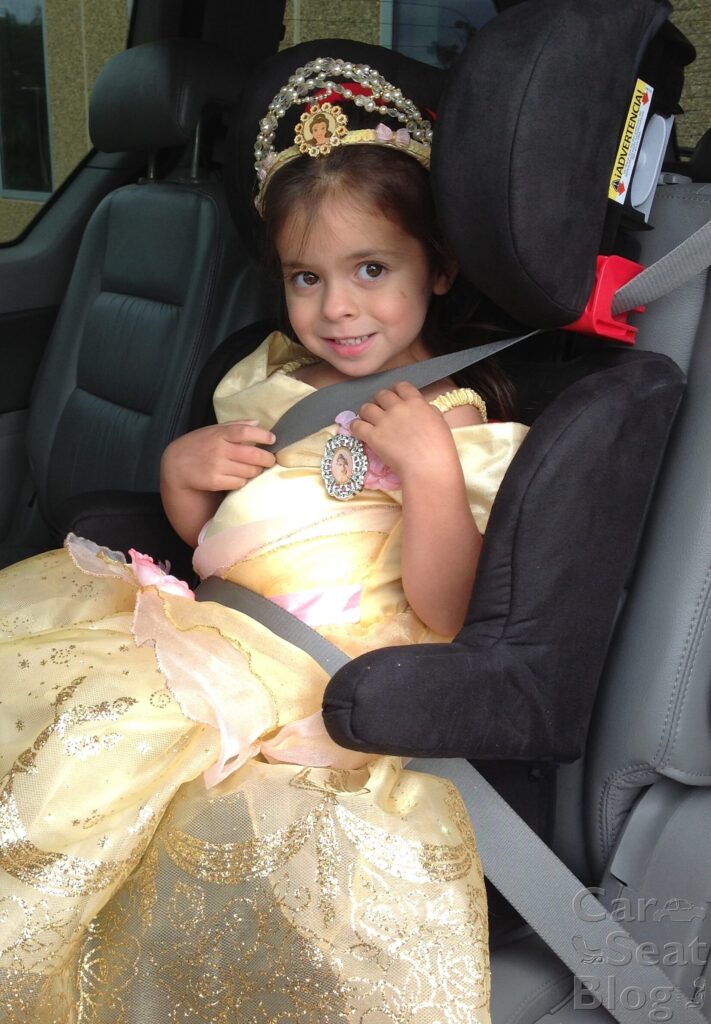 It’s still happening all across America. Parents and caregivers are moving preschool-age children into booster seats prematurely. The problem is, it’s really not a “graduation”. It’s a demotion in safety. And it’s putting young children at risk for serious injuries in a crash.
It’s still happening all across America. Parents and caregivers are moving preschool-age children into booster seats prematurely. The problem is, it’s really not a “graduation”. It’s a demotion in safety. And it’s putting young children at risk for serious injuries in a crash.
What is a Booster Seat and How Does it Protect?
Technically, a booster seat does NOT have an integrated 5-point harness. It uses the vehicle’s lap/shoulder seatbelt to restrain the child. A booster simply raises the child up (literally, a “boost”), so that the vehicle seatbelt, which is designed to restrain and protect an adult in a crash, fits the smaller body proportions of a child. When a child rides in a booster seat, the vehicle is mainly responsible for restraining and protecting the child in a crash.
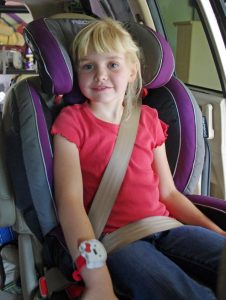
The downside is that a typical lap/shoulder seatbelt (aka, a 3-point restraint system) has limitations and isn’t as protective as a 5-point harness, especially in certain types of crashes like side-impacts and rollovers. This is why professional drivers and racers typically use a 4-point or 5-point restraint system.
Is it a Booster? Confusing Marketing Terms Are… Confusing
There are car seats on the market that use the word “booster” in their marketing. You’ll see car seats that are called “Harnessed Boosters”, “Harness + Booster”, 3-in-1, or All-in-One. All of these types of seats are generally appropriate to use for a typical 3-year-old child but only when used with the 5-point harness. Most of these seats have an integrated harness that is rated up to 50 or 65 pounds and most also have tall top harness slots to fit preschool-age kids. Once the child is older and the harness has been outgrown by height or weight, the seat can be converted to booster mode (without the harness) and used with the seatbelt over the child.
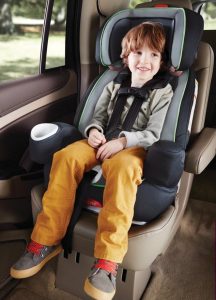
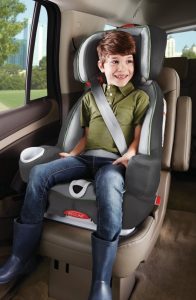
6 Reasons Why 3-Year-Olds Should NOT Ride in a Booster
With a few exceptions, most booster seats currently for sale in the US have a minimum age requirement of 4 years and a minimum weight requirement of 40 lbs. Check the owners manual that came with the seat for confirmation.
Young children, in general, lack the maturity to stay properly seated for every ride in a booster seat (see more about maturity below).
Even though some booster seats made in the past may be rated from 30 lbs. up, safety experts agree that children under 40 lbs. are best protected in a seat with a 5-point harness.
Some booster seats may not position the seatbelt appropriately on the body of 3-year-old, which could create a variety of problems in a crash.
Having a 3-year-old in a booster is illegal in some states (like New York), although there may be exemptions
While booster seats are appropriate and necessary for older children who have outgrown the 5-point harness on their carseat but still need a “boost” to fit properly in an adult seatbelt, they generally offer less protection in a serious crash.
Maturity Matters
Think of it this way – when your child rides in a carseat with a 5-point harness, the responsibility for the child’s safety rests on you as the parent or caregiver. It’s YOUR responsibility to make sure that the car seat is installed correctly and the harness straps are snug around the child. In this scenario, the child is responsible for nothing. In a crash, the child should be in the proper position to allow the carseat to do its job.
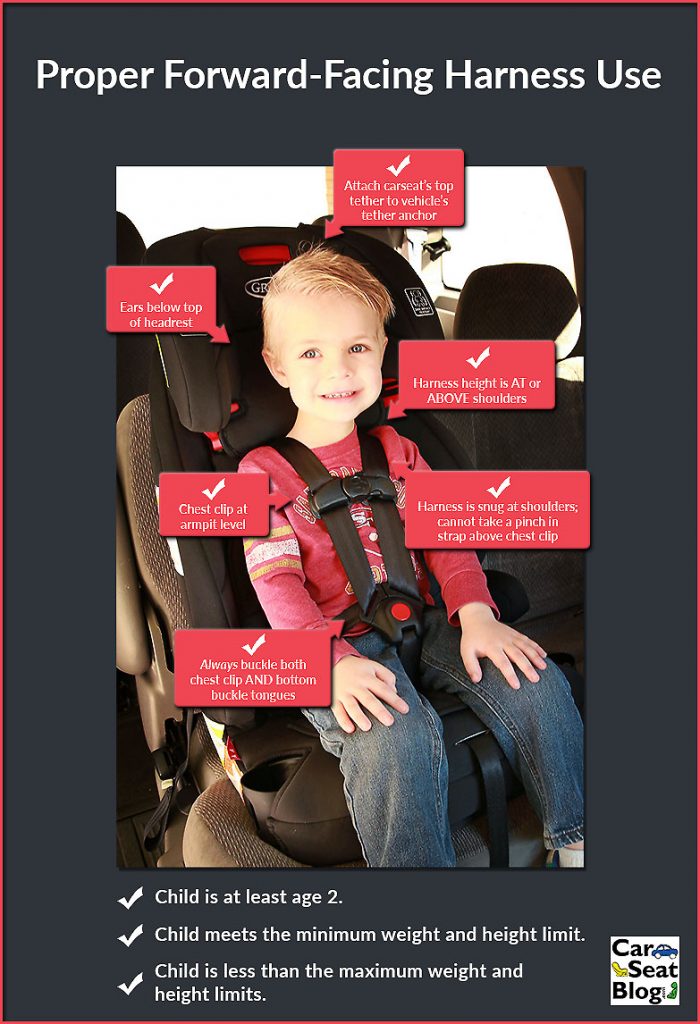
Proper Use Forward-Facing Carseat with Harness
Once your child transitions to a booster seat using the vehicle seatbelt – that responsibility for the child’s safety switches to the child. The booster seat can’t do its job if, at the moment of impact, the child has moved out of position. Or put the shoulder belt under their arm. Or fallen asleep out of position. Booster seats are for children who are mature enough to sit still and stay in the proper position. And they have to be able to stay in that proper position for the entire ride. Awake or asleep.

Definitely NOT Ready for a Booster Seat!
I know there are some rare 3-year-olds who are mature enough to be responsible for their own safety in a moving vehicle but the vast majority cannot. 3-year-olds (and many 4-year-olds) are just too wiggly! Most are not ready yet for the extra freedom that a booster provides. By kindergarten age, some kids are large enough and mature enough to start the transition to a booster seat. But if your kid is still a wiggle worm with no impulse control then you should continue to use a seat with a 5-point harness. Just make sure that your child is still within the weight and height limits of the seat. Very often, kids outgrow their car seat by height before reaching the weight limit.
What About Giant 3-Year-Olds?
We understand that some 3-year-old children are really tall and/or heavy for their age and may have legitimately outgrown their harnessed carseat. There are also some carseats on the market that can easily be outgrown even by average-sized 3-year-olds. To help, we’ve put together a list of the longest-lasting harnessed seats currently on the market.
For more information on appropriate seats for preschoolers, please see our list of Recommended Combination Seats.






